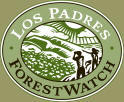|
November 15, 2005
FORESTWATCH APPEALS PLAN TO EXPAND GRAZING
IN BIG SUR COASTAL WILDERNESS
Agency Tries a Third Time to
Allow Illegal
Livestock Grazing in the Silver Peak Wilderness
Big Sur, CA - ForestWatch and
three other conservation groups filed an appeal yesterday over a
controversial decision by the Forest Service to expand livestock
grazing in sensitive habitat and wilderness areas along the Big
Sur coast in the Los Padres National Forest.
This marks the third time in
six years that the groups have appealed plans to expand grazing
along this stretch of fragile coastline. These earlier appeals
forced the agency to go back to the drawing board each time. The
new plan suffers from many of the same deficiencies that
doomed previous plans.
The new plan, approved in
September, allows
livestock grazing to expand across 24,380 acres on four
existing grazing allotments, named the Gorda, Salmon
Creek, Alder Creek, and San Carpoforo allotments. The plan also
creates an entirely new allotment called Kozy Kove, and adds the
recently-acquired Sur Sur and Sea Vista ranches to the San
Carpoforo allotment.
|
 |
|
The
Pacific Valley Unit of the Gorda Allotment, where the
agency
is proposing up to 343 cattle between Highway One and
the coast. |
Cattle
and other livestock grazing on these coastal allotments
threatens several federally-listed species, including the
endangered Smith’s blue butterfly, the threatened South-Central
Coast steelhead, and the threatened California red-legged frog,
and negatively impacts sensitive vernal pool habitats and rare
plant species. The plan also illegally increases grazing
levels in a protected wilderness area, conflicts with
recreation uses, and leads to further damage of Native
American sites and areas of cultural significance.
The Original 1999 Plan
The agency's most recent
proposal is not much different than previous attempts to expand
livestock grazing along the Big Sur coast.
The agency proposed almost the exact same grazing scheme in
1999, but withdrew the decision after the Ventana Wilderness
Alliance (VWA) and the Center for Biological Diversity (CBD) filed
an appeal, citing an inadequate review of impacts and
a failure to comply with federal laws.
The Revised
2004 Plan
In
2004, the agency revised its grazing expansion plan and formally
approved it in December 2004. As approved, the grazing would
have damaged sensitive habitats for endangered species, polluted
clean rivers, and interfered with newly-designated wilderness
areas.
ForestWatch
joined forces with VWA, CBD, and the Ventana Chapter of the
Sierra Club to formally appeal the 2004 decision. In response to our
appeal, the Forest Service withdrew its earlier plan and went back
to the drawing board in March 2005.
The Revised 2005 Plan
The new plan suffers
from the same legal and scientific deficiencies that plagued the
agency's previous proposals.
Under NEPA, the Forest Service must prepare an Environmental
Impact Statement before approving any action with significant
environmental effects, such as authorizing livestock grazing in
endangered species habitat and wilderness.
Instead, once again, the agency is only preparing a shorter,
less-rigorous Environmental Assessment. The agency's EA fails to explore a reasonable range of
alternatives, including not grazing; fails to consider public
comments; fails to consider cumulative environmental impacts;
and ignores
numerous published studies showing significant impacts caused by
grazing.
In its revised analysis, the
agency also provides new justification for expanding grazing
into the newly-designated Silver Peaks Wilderness Area. Allowing
grazing in this pristine area violates the Wilderness Act,
which allows grazing to occur in wilderness only if grazing was
permitted in an area before wilderness designation.
Cattle
have previously damaged riparian habitat for steelhead along
Prewitt and Plaskett Creeks in the Gorda Allotment, and cattle
can injure or kill steelhead eggs and young fish by treading
through anadromous fish streams. Where livestock graze in or
near Smith’s Blue Butterfly habitat, trampling kills or stunts
the growth of seacliff buckwheat, the butterfly’s host plant.
|
 |
|
The
proposed San Carpoforo Allotment, a new grazing
allotment that
would encroach into the newly-designated Silver Peaks
Wilderness Area. |
The project
area has a high degree of biological significance; it contains
habitat for numerous endangered and other sensitive species;
includes portions of and is adjacent to the
Congressionally-designated Silver Peak Wilderness Area; is
bordered by the recently-designated California Coastal National
Monument; contains San Carpoforo Creek, which was declared an
“area of particularly high ecological significance” in the
Forest Service’s Southern California Mountains and Foothills
Assessment; and is adjacent to Monterey Bay National Marine
Sanctuary.
What's Next
Agency officials will review
the appeal, and must issue a decision granting or denying the
appeal by the end of the year. ForestWatch and other
conservation groups hope that this is the last time they will
have to appeal the plan to protect this precious coastline.
|

